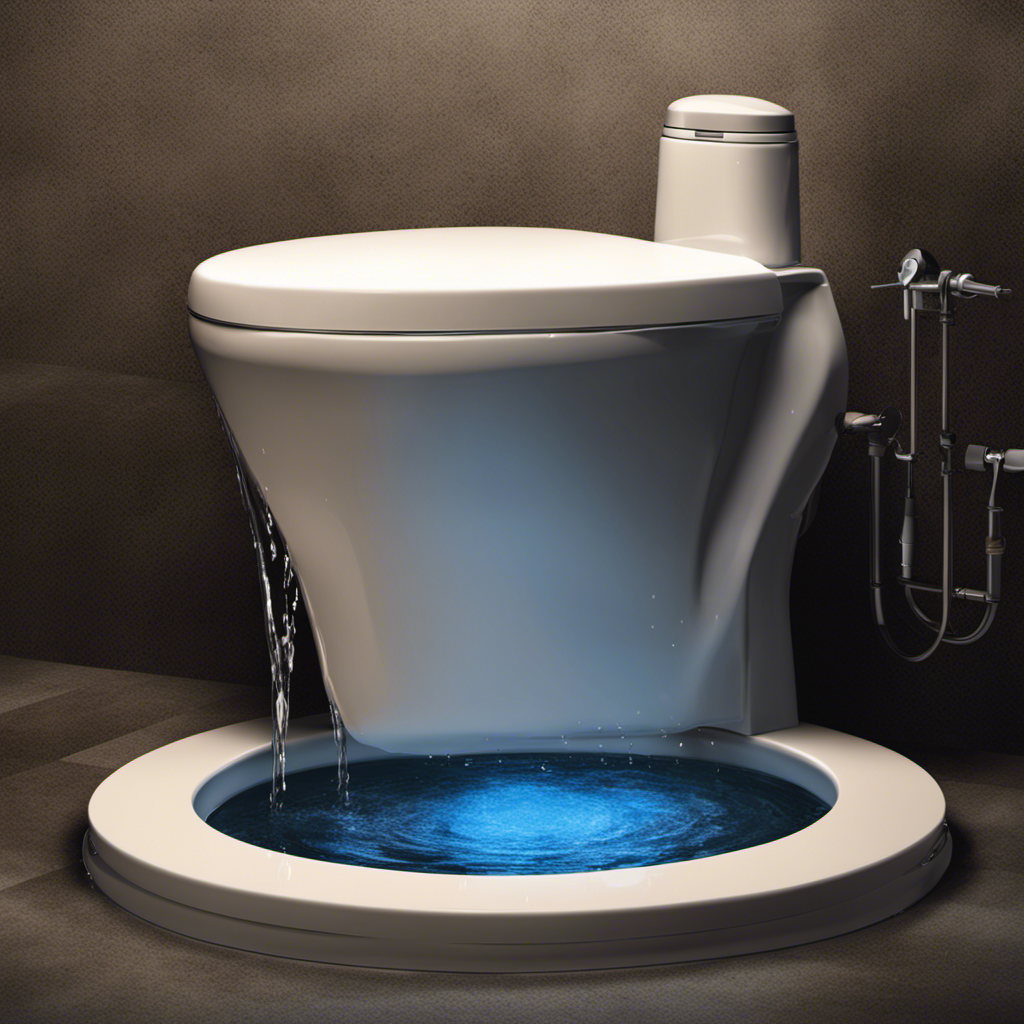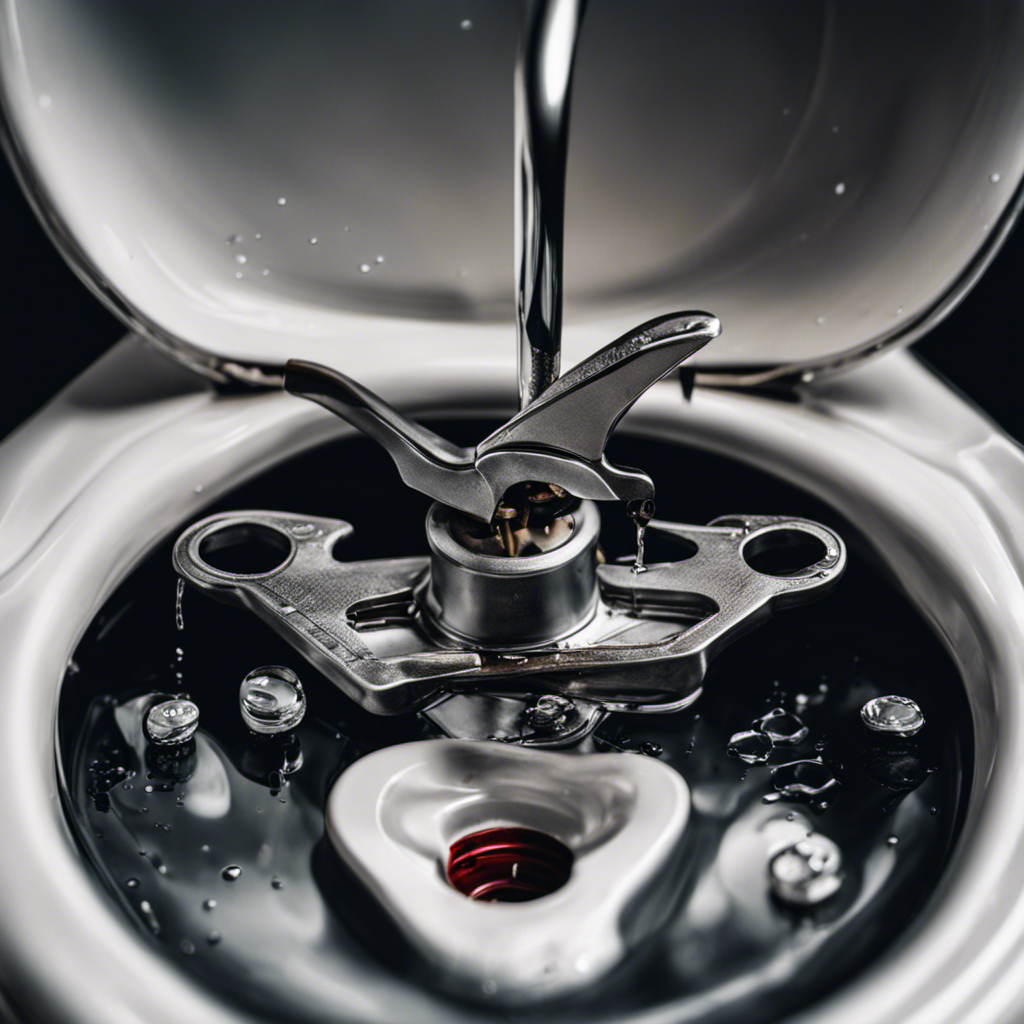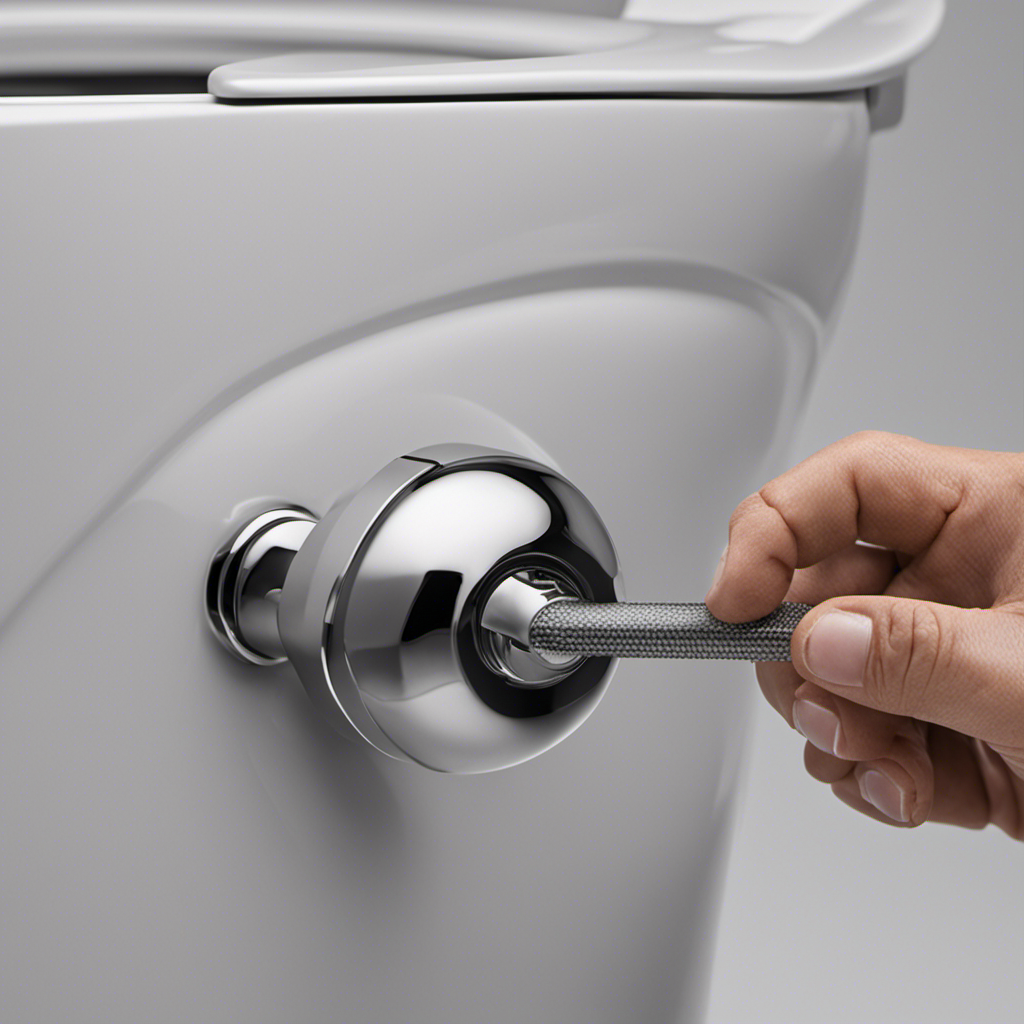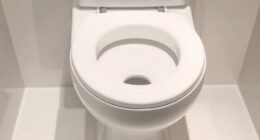Hey there, have you ever wondered why your toilet keeps running non-stop? Well, I’ve got the answers you’re looking for.
In this article, I’ll delve into the common causes of a constantly running toilet and provide you with some technical solutions to fix the problem.
From a faulty flapper valve to a misaligned flush valve, we’ll cover it all.
So, sit tight and get ready to put an end to that annoying bathroom symphony.
Let’s dive in!
Key Takeaways
- Flapper valve issues and solutions are common causes of a constantly running toilet
- Float and flush valve issues can also lead to a running toilet
- Common flush valve issues, such as a faulty flapper or fill valve, can contribute to continuous running
- Troubleshooting toilet clogs and water pressure issues may help identify and resolve the problem of a running toilet.
Common Causes of a Constantly Running Toilet
One common cause of your toilet constantly running is a faulty flapper valve. The flapper valve is located in the toilet tank and is responsible for controlling the flow of water from the tank to the bowl. When the flapper valve is worn out or damaged, it fails to create a proper seal, causing water to continuously leak into the bowl. This results in a constantly running toilet.
To fix this issue, you will need to replace the flapper valve. First, turn off the water supply to the toilet by shutting off the water valve located behind the toilet. Then, remove the old flapper valve and install a new one. Finally, turn the water supply back on and test the toilet to ensure it stops running.
How a Faulty Flapper Valve Can Cause a Running Toilet
When it comes to a running toilet, a faulty flapper valve is often the culprit. Flapper valve malfunctions can cause water to continuously flow from the tank to the bowl, leading to a constantly running toilet.
There are several causes for a flapper valve malfunction, such as wear and tear, improper installation, or a build-up of mineral deposits.
To fix the flapper valve and stop the toilet from running, it may be necessary to replace the flapper or adjust the chain length.
Flapper Valve Malfunctions
If your toilet’s constantly running, it’s likely due to a malfunctioning flapper valve. The flapper valve is an important component of your toilet’s flushing mechanism, responsible for controlling the flow of water from the tank to the bowl.
When the flapper valve malfunctions, it can cause water to continuously leak from the tank into the bowl, resulting in a constantly running toilet. Troubleshooting flapper valve issues can involve inspecting the flapper for damage or wear, checking the chain or lift wire for proper alignment and tension, and ensuring that the flapper is properly seated on the flush valve opening.
If these troubleshooting steps fail to resolve the issue, it may be necessary to replace the flapper valve altogether. Toilet flapper replacement is a relatively simple and cost-effective solution that can restore your toilet’s proper function and stop it from running constantly.
Causes of Running Toilet
The most common causes of a toilet that won’t stop running are a faulty flapper valve, a stuck flush valve, or a malfunctioning fill valve. When your toilet keeps running, it not only wastes water but also increases your water bill.
Here are some signs that indicate you have a running toilet:
- You hear a continuous hissing sound coming from the toilet tank.
- The water level in the toilet bowl is constantly changing.
- You notice water stains or puddles around the base of the toilet.
To fix a running toilet, follow these simple toilet repair tips:
- Check the flapper valve for damage or misalignment.
- Inspect the flush valve to ensure it is not stuck.
- Test the fill valve to see if it is functioning properly.
Fixing the Flapper Valve
To fix the flapper valve, you’ll need to turn off the water supply and flush the toilet to drain the tank.
The flapper valve is responsible for controlling the flow of water from the tank into the bowl. If it is not working properly, it can cause the toilet to constantly run, wasting water and increasing your water bill.
To fix it, start by turning off the water supply valve located behind the toilet. Then, flush the toilet to drain the tank completely.
Next, remove the toilet tank lid and locate the flapper valve at the bottom of the tank. Inspect it for any damage or debris and clean or replace as necessary.
Finally, turn the water supply back on and test the toilet to ensure it no longer runs continuously.
Regular toilet maintenance is important for water conservation and preventing unnecessary water waste.
Identifying and Fixing a Leaking Fill Valve in Your Toilet
If you have a leaking toilet, it could be due to a faulty fill valve. Here are some steps to help you identify and fix the issue:
- First, turn off the water supply to the toilet by shutting off the valve behind the toilet.
- Next, flush the toilet to drain the water from the tank.
- Locate the fill valve, which is usually on the left side of the tank.
- Try tightening the nut on the fill valve to ensure a secure connection.
- If tightening the nut doesn’t solve the problem, you may need to replace the fill valve.
- Adjusting the water level in the tank can also help fix a leaking fill valve.
By addressing a leaking fill valve, you can prevent water waste and potential damage to your toilet.
Now, let’s discuss the role of a stuck float in a running toilet.
The Role of a Stuck Float in a Running Toilet
If your toilet keeps running, it’s likely because of a stuck float. The float is a small device that rises with the water level in the tank and signals the fill valve to shut off when the tank is full.
However, if the float gets stuck in the ‘up’ position, it can prevent the fill valve from closing properly, causing water to continuously flow into the tank. To fix a stuck float, you can try adjusting the float arm or bending it slightly to ensure it moves freely. If that doesn’t work, you may need to replace the float altogether. This is a relatively simple repair that can be done with basic tools.
Now, let’s move on to fixing a worn out or misaligned flush valve.
Fixing a Worn Out or Misaligned Flush Valve
When it comes to fixing a worn out or misaligned flush valve, there are several options for valve replacement.
One common issue with flush valves is leakage, which can be caused by a worn or damaged seal.
Another issue to watch out for is a misaligned or improperly installed flush valve, which can lead to inconsistent flushing or a constantly running toilet.
Valve Replacement Options
You can consider replacing the valve to stop your toilet from running constantly. When it comes to toilet valve maintenance, it’s important to know the signs of a faulty valve. Here are a few key indicators that it might be time for a valve replacement:
- Water continues to run even after flushing
- The toilet doesn’t fill up properly after flushing
When deciding on a replacement valve, there are a couple of options to consider:
- Ballcock Valve: This traditional valve is affordable and easy to install, making it a popular choice for homeowners.
- Fill Valve: Also known as a float valve, this type of valve is more modern and efficient, providing a consistent water level in the tank.
Replacing the faulty valve can save you from wasting water and prevent further damage to your toilet. Don’t hesitate to consult a professional if you’re unsure about the replacement process.
Common Flush Valve Issues
To fix common flush valve issues, start by checking if the flapper is properly sealing the flush valve opening. If the flapper is not sealing properly, it can cause water to continuously run in the toilet tank. This can be fixed by adjusting the flapper or replacing it if necessary. Another common issue is a faulty fill valve, which controls the water supply to the toilet tank. If the fill valve is not functioning correctly, it can also cause the toilet to run constantly. Checking and replacing the fill valve if needed can resolve this issue. Here is a table summarizing the common flush valve issues and their solutions:
| Common Issue | Solution |
|---|---|
| Flapper not sealing properly | Adjust or replace the flapper |
| Faulty fill valve | Check and replace the fill valve |
Troubleshooting Other Possible Reasons for a Running Toilet
Check if the flapper valve is properly sealing the tank. If the toilet is still running, there may be other potential causes to consider. Here are two common issues to troubleshoot:
-
Toilet Clogs:
-
Check for any visible blockages in the toilet bowl or drain pipes.
-
Use a plunger or a drain snake to clear any clogs.
-
If the clog persists, it may require professional assistance to remove.
-
Water Pressure Issues:
-
Inspect the water supply valve, located behind the toilet, to ensure it is fully open.
-
Check if the water pressure in the entire house is low. If so, it could be a larger plumbing issue.
-
If the water pressure is only low in the toilet, the fill valve or supply line may need to be replaced.
Conclusion
In conclusion, a constantly running toilet can be caused by several common culprits. Whether it’s a faulty flapper valve, leaking fill valve, stuck float, or worn out flush valve, identifying and fixing the issue is crucial.
By troubleshooting and addressing these problems promptly, you can save water, money, and prevent potential damage to your toilet. Remember, regular maintenance and timely repairs are key to keeping your toilet functioning smoothly.
So stop the steady stream, silence the sound, and solve the running toilet riddle!










